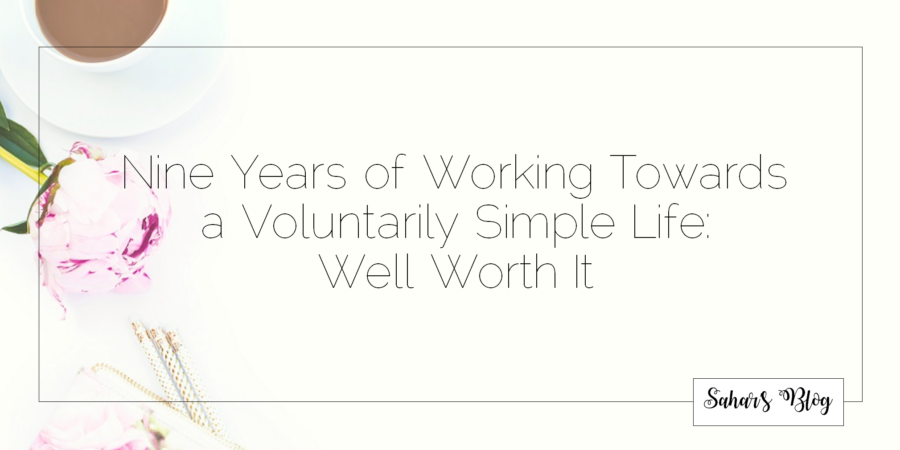Back in 2008, I promised myself that I would live a voluntarily simple life. It’s still an on-going process, surprisingly enough; I really thought that I would be able to get a hand on it after only a year or two.
The first step was really easy; there was so much in my life that I actually, really didn’t need, and I found myself getting rid of it all. It was empowering and just plain wonderful, and I felt lighter than I had in years. By the same token, it was easy to see the things that I had to keep in my life. You can’t live in Canada and not have certain winter essentials! I still trimmed down what I had—going, for example, from more than two dozen scarves to “just” five.
However, what I wasn’t counting on how difficult the middle part would be; the stuff that subjectively I felt I needed, and yet objectively, could do without. With some effort, some things became clearly necessary for my lifestyle, and so, I hung onto them. And, on the flip side, some things became clearly unnecessary, and I could get rid of those, as well. But, even if it is narrowing, there is always that middle ground that remains, that elusive area that remains, however much light I try to shed on it, grey.
That in itself doesn’t bother me as much as how it can so easily grow, from a narrow to a much broader middle ground, depending on what I am exposed to on a day-to-day basis: too many commercials, too many people pushing the same product, too many magazine covers boasting the same objectives, fashion magazines encouraging the same type of clothing… It gives new life to however narrow that band may have become.
And so, I am left to wonder: how come I still slip into the trap of thinking I have little, when I have so much? No doubt that one of the culprits at hand remains the intense materialism that permeates our society nowadays. We’re told, left and right, that we must buy, buy, and then buy some more. There is always something new everyone must have. This type of thinking has led to the rise of fast fashion, with all its terrible consequences on fellow humans and on the planet.
It really gets exhausting; we “shop ‘til you drop”, stuff our homes, become claustrophobic, need more money to pay off the credit cards and pay for storage or for a bigger residence, and then we have to deal with the financial pressures related to it all. It’s pains me to see such a significant proportion of my friends discussing, during a supposedly relaxing night out, all the stress their financial decisions are putting on them—and their lifestyles are not particularly luxurious or wasteful. They live well, but relatively simply.
One of my friends mentioned how he felt that even when you choose to live a life of voluntary simplicity, you suffer the financial consequences of a society of consumption, in the form of purchases that have to be made again and again, rather than lasting as long as they used to—like electric appliances and furniture.
Yet again, my conclusion is empowering in its simplicity: to live a simple life, one must take things one step at a time, approach each purchase as they occur, and only focus on the immediate future. Because there is a lot to keep in mind, even more so that developments occur every day. So I will continue to think of my purchases one at a time, as the need emerges—and even question that need in the first place.
{ Sahar’s Blog is all about being in a constant state of learning. So it only made sense for me to go back to all my previous posts and see how my thoughts on certain topics have changed over the last nine years. In this new, ongoing series of posts, I’ll be rereading some of my older posts and reflecting on the same topic in light of what I’ve learned since then. It’s going to be very interesting to see how things have changed! }


You’re so smart to take anything, including the goal of living more simply, one step at a time. Otherwise you can become overwhelmed—and that’s unnecessary clutter, too.